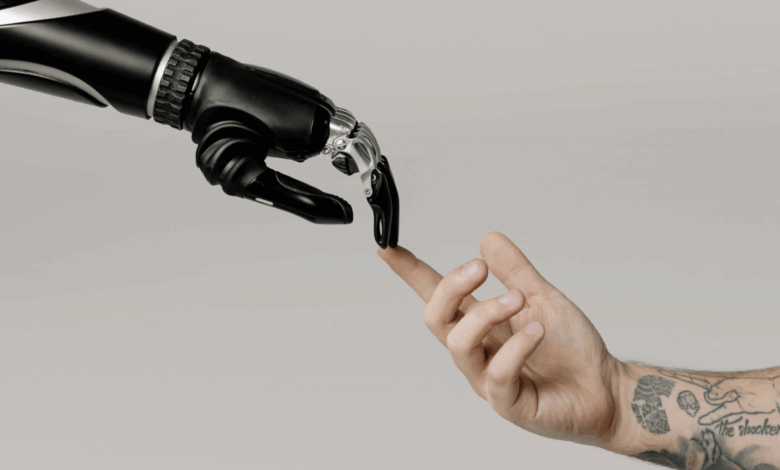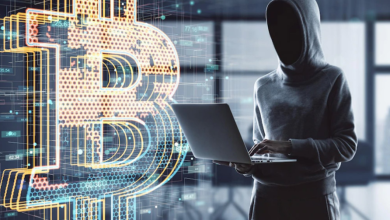
When speaking about the future of AI, leaders in tech tend to ignore what happens to the 8.2 billion humans caught in the transition. This is a fundamental flaw of the recently released AI 2027 report.
Daniel Kokotajilo’s 2021 predictions about AI development proved remarkably accurate, including unprecedented chip export restrictions to China. Now, Kokotajilo and colleagues have released AI 2027 forecasting even bigger developments: early AI agents by mid-2025, complete coding automation by early 2027, and artificial superintelligence by late 2027.
It also predicts that within a year and a half, AI will eliminate poverty, climate change, and other major global issues, replacing all jobs with universal basic income (UBI). All of these impact humans, but nothing in the report accounts for how to advance humans’ capabilities, too.
What remains for all the people in this world to do?
The barriers to AI 2027’s vision
AI 2027 speaks of a tech-centric utopia, but two major barriers stand in the way, both influenced by humans: physical and psychological restraints.
The biggest physical barrier is infrastructure. More than a third of the world still doesn’t have access to internet, more than a billion don’t have access to roads, and large portions lack electricity. It will be hard to eradicate hunger or address healthcare if you cannot reach people. Not to mention, a quarter of the worlds’ adults don’t have bank accounts to receive UBI funds.
Most challenging are the psychological barriers; human resistance to change and job encroachment by AI, greed to hold onto wealth, corruption, and the desire to retain and grow power. We already see these power and wealth struggles globally. Sure, AI may reduce costs for corporations, but reducing headcount and increasing automation, places wealth in the hands of even fewer. These people won’t want to share that power or money, especially not with those who need it most, which will further accelerate inequality.
Yes, AI capabilities may advance as predicted, but the question isn’t just what technology can do, it’s what roles remain for humanity in this new landscape.
The Service Sector Shield: Why Half the World’s Jobs Are Safe
The report oversimplifies AI’s impact on human contribution. It envisions wholesale job displacement, but the reality is more nuanced.
AI tools are encroaching on jobs, but with about 3.63 billion people in the workforce, it’s more likely that automation will reduce the number of jobs by around 20%, rather than completely. This also varies widely based on the infrastructure of a country, how many people work in specific sectors, and where they’re at in their career.
For instance, almost half of the world’s workforce is engaged in the service sector. Daniel Susskind predicts that this sector will remain relatively stable because these are the jobs we as consumers actually prefer humans to do.
Beyond preference, people have a need to contribute and a desire to make a difference. Without jobs, people will be restless, unsure of what to do with their ideas, potential, and energy. The technology will only get better, we will continue investing billions into data centers and chip manufacturing facilities. But it will also ignite widespread social conflict as inequality deepens, unless we invest in human upskilling and development at the same scale.
Chips ✓ Bots ✓ Data Centers ✓ Humans ?
If we truly want to tackle the world’s biggest problems – poverty, hunger, access to education, inequality, climate change and more – we must focus on moral ambition, leveraging education to inspire and orient young people, and upskilling the current workforce.
Upskilling can be done quickly and will cost just $100/person (if done at scale), teaching current employees innovation and resilience. Rather than checking boxes, employees should be encouraged to develop an innovator’s mindset, staying ahead of fast-changing AI tools.
We also have to address education at the source, with young people. New curricula will require a focus on empathy, real-world problem solving, complex systems thinking, and civic engagement, supporting them to develop innovative solutions that foster accountability, transparency and high performance in their countries. This will build resilience at all levels, which is crucial to help us navigate the change and uncertainty we are all living through.
If AI 2027 rings true, we have just 18 months before AI begins displacing workers at scale. The tech industry is already investing $800 billion to $1 trillion annually—$400-500 billion in data centers, $90-120 billion in AI chips and $100-110 billion in robotics and automation. If the industry would match that with a 1.25% investment in human potential and skilling, in the same time we are accelerating the chips, we can upskill 50 million employees and educate 50 million young people as AI innovators and entrepreneurs. That’s one hundred million people empowered to work with revolutionary AI equals transformation and well-being for all. Isn’t that something to think about?





